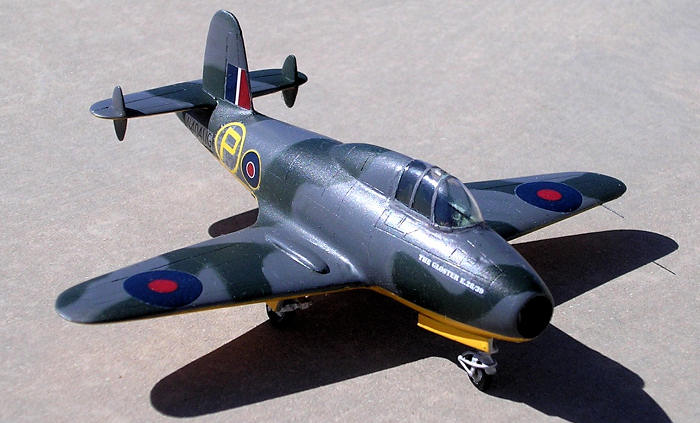
Pavla 1/72 Gloster E.28/39 Pioneer
| KIT #: | ? |
| PRICE: | £10.99 |
| DECALS: | Three Options |
| REVIEWER: | Carmel J. Attard |
| NOTES: | Injection molded short run kit with resin details. |

| HISTORY |
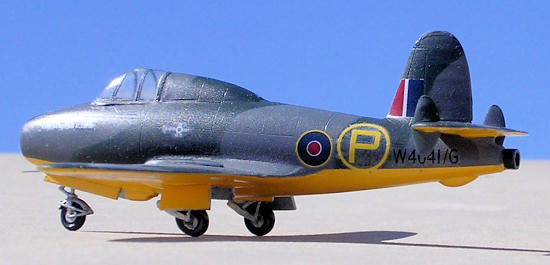 E28/39
had a double walled fuselage to the rear of the cockpit, the air being drawn in
through the nose intake down either side of the cockpit to the turbine
unit situated
aft of the pilot. The injection nozzle being situated at the extreme tail end of
the fuselage. Small auxiliary tail fins were fitted on each tailplane at one
period. In 1947 a Whittle gas turbine unit of the type used in the original
Gloster jet aircraft was shipped to the
E28/39
had a double walled fuselage to the rear of the cockpit, the air being drawn in
through the nose intake down either side of the cockpit to the turbine
unit situated
aft of the pilot. The injection nozzle being situated at the extreme tail end of
the fuselage. Small auxiliary tail fins were fitted on each tailplane at one
period. In 1947 a Whittle gas turbine unit of the type used in the original
Gloster jet aircraft was shipped to the
| THE KIT |
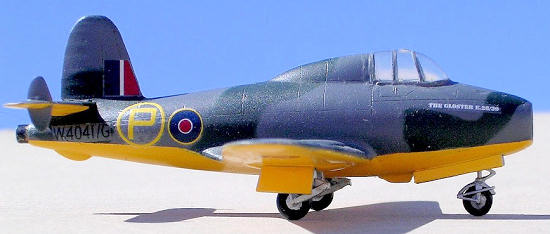 This
is a small but beautifully moulded kit by Pavla Models and contains resin detail
parts which are of fine quality. This injection moulded plastic and resin
combination makes up into a simple but very pleasing model of the first British
jet aircraft. The pilot office is cast as part of the resin air intake splitter
plate integrating also the nose wheel bay. The vertical splitter plate has three
small horizontal streaks also in resin that fix to each side. Cockpit details as
control column, pilot seat and instrument panel are also in resin.
This
is a small but beautifully moulded kit by Pavla Models and contains resin detail
parts which are of fine quality. This injection moulded plastic and resin
combination makes up into a simple but very pleasing model of the first British
jet aircraft. The pilot office is cast as part of the resin air intake splitter
plate integrating also the nose wheel bay. The vertical splitter plate has three
small horizontal streaks also in resin that fix to each side. Cockpit details as
control column, pilot seat and instrument panel are also in resin.
| CONSTRUCTION |
The instruction indicates colour detail of parts as
one goes along with assembly of the fuselage. Since the aircraft has a tendency
to be a definite tail sitter adequate weight needs to be added. Ideally the
little space provided is the cockpit sides empty spaces so that weight pieces
need to fit in. Once the fuselage halves are closed the one piece lower wing is
fitted and the two outer upper
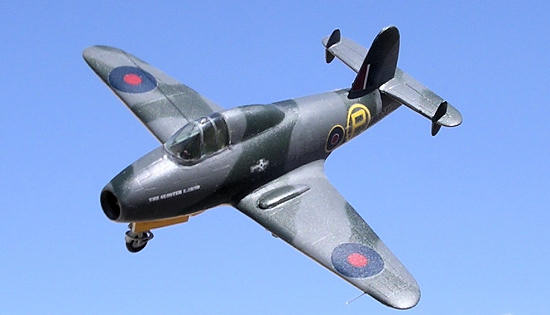 panels
come in place. These leave a small gap at the root that is put right with a
small amount of filer. Unlike the early Frog kit release of the same aircraft
the two bulges that are on the inner of upper wing comes as separate items. The
rest of assembly is easy. There is a pitot tube fairing fitted to underside and
optional exhaust nozzle to choose from.
panels
come in place. These leave a small gap at the root that is put right with a
small amount of filer. Unlike the early Frog kit release of the same aircraft
the two bulges that are on the inner of upper wing comes as separate items. The
rest of assembly is easy. There is a pitot tube fairing fitted to underside and
optional exhaust nozzle to choose from.
| COLORS & MARKINGS |
I selected to finish my model in the dark green and ocean grey camouflage. This carried the tail finlets. I first airbrushed the underside in white undercoat, followed by identification yellow using Humbrol enamel paints. These areas were masked and the upper camouflage applied. Interior green was applied to cockpit at an earlier stage. The wheel wells and legs were silver.
| CONCLUSIONS |
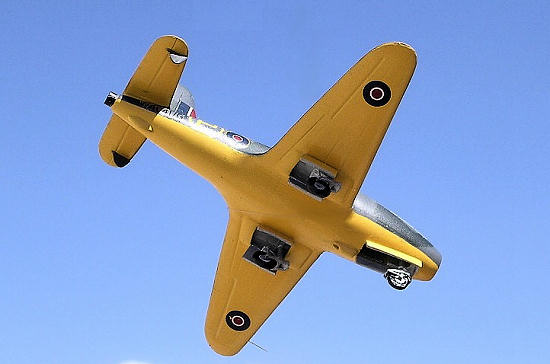 The
detail that comes with the undercarriage legs was of high quality and worthy of
praise for this Pavla product. The type certainly appeals to both military jet
fans and those with a taste for prototypes. All in all this is a nice little
model of the first British jet.
The
detail that comes with the undercarriage legs was of high quality and worthy of
praise for this Pavla product. The type certainly appeals to both military jet
fans and those with a taste for prototypes. All in all this is a nice little
model of the first British jet.
May 2008
Copyright ModelingMadness.com. All rights reserved. No reproduction in part or in whole without express permission.
If you would like your product reviewed fairly and quickly, please contact the editor or see other details in the Note to Contributors.
Back to the Review Index Page 2022